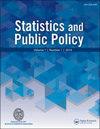重新思考瑞士国家科学基金会的资助额度:贝叶斯排名和彩票
IF 1.5
Q2 SOCIAL SCIENCES, MATHEMATICAL METHODS
引用次数: 9
摘要
资助机构依靠同行评审和专家小组来选择值得资助的研究。同行评议有其局限性,包括对风险提案或跨学科研究的偏见。审稿人和小组之间的可靠性很低,特别是对于接近资助线的提案。资助机构也越来越认识到机遇的作用。瑞士国家科学基金会(SNSF)引入了一种抽奖方式,从中间的好而非优秀的提案中选出。在本文中,我们介绍了一个贝叶斯层次模型的评估过程。为了对提案进行排名,我们估计它们的期望排名(ER),它包含了提案之间估计差异的大小和不确定性。根据ER和预算确定临时资金额度。风险评估及其可信间隔用于识别与临时资金线重叠的具有相似质量和可信间隔的提案。这些提案以抽签方式进行。我们举例说明了两种国家科学基金资助计划在职业和项目资助方面的方法。我们认为该方法可以减少评估过程中的偏差。本文的R代码、数据和其他材料可在网上获得。本文章由计算机程序翻译,如有差异,请以英文原文为准。
Rethinking the Funding Line at the Swiss National Science Foundation: Bayesian Ranking and Lottery
Abstract Funding agencies rely on peer review and expert panels to select the research deserving funding. Peer review has limitations, including bias against risky proposals or interdisciplinary research. The inter-rater reliability between reviewers and panels is low, particularly for proposals near the funding line. Funding agencies are also increasingly acknowledging the role of chance. The Swiss National Science Foundation (SNSF) introduced a lottery for proposals in the middle group of good but not excellent proposals. In this article, we introduce a Bayesian hierarchical model for the evaluation process. To rank the proposals, we estimate their expected ranks (ER), which incorporates both the magnitude and uncertainty of the estimated differences between proposals. A provisional funding line is defined based on ER and budget. The ER and its credible interval are used to identify proposals with similar quality and credible intervals that overlap with the provisional funding line. These proposals are entered into a lottery. We illustrate the approach for two SNSF grant schemes in career and project funding. We argue that the method could reduce bias in the evaluation process. R code, data and other materials for this article are available online.
求助全文
通过发布文献求助,成功后即可免费获取论文全文。
去求助
来源期刊

Statistics and Public Policy
SOCIAL SCIENCES, MATHEMATICAL METHODS-
CiteScore
3.20
自引率
6.20%
发文量
13
审稿时长
32 weeks
 求助内容:
求助内容: 应助结果提醒方式:
应助结果提醒方式:


